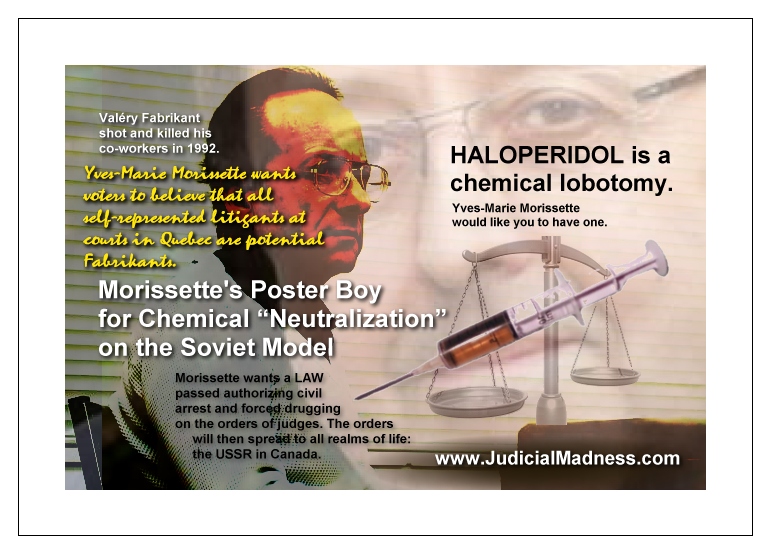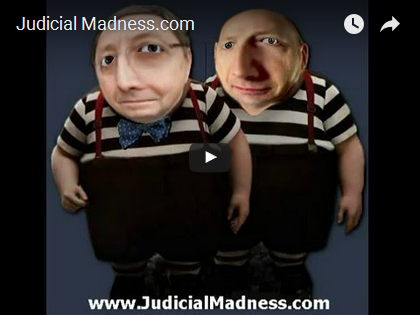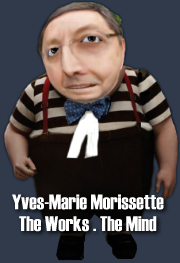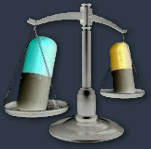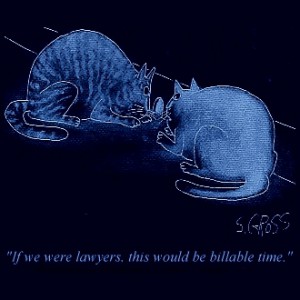Le Juge Yves-Marie Morissette de la Cour d’appel: La référence en quérulence au Québec par “Le Commission Papillon”
FEATURED GUEST ARTICLE
Judge Yves-Marie Morissette of the Court of Appeal: the Reference on Querulence in Quebec By “The Papillon Task Force”
La Commission Papillon - La carte cachée d’une faction corrompue du système de justice Québécois
The Papillon Task Force – The Hidden Card of a Corrupt Faction in the Quebec Justice System
Introduction
|
Qu’est-ce que c’est, la Commission Papillon? |
What is the Papillon |
|
Dans ce qui s’apprête à être publié, vous découvrirez un côté insoupçonné de la justice au Québec. Par des exemples concrets, vous pourrez comprendre comment, par le détournement des fins de la justice, on peut achever un individu qui ne demande que justice lui soit rendue. |
In what is about to be published, you will discover an unsuspected side of justice in Quebec. From concrete examples, you will be able to understand how, by hijacking the purposes of justice, one can make an end of an individual who asks for nothing but that he be given justice. |
|
N’allez pas croire que je fabule, en fait j’aurais préféré qu’il en soit autrement. Ce que le tribunal m’empêche de dénoncer judiciairement, je le dénonce ici. Cette histoire devrait connaître un début de dénouement lors du procès sur le fond prévu pour le 21 janvier 2013. Combien y a-t-il d’autres victimes la déclaration de quérulence au Québec? Serez-vous la prochaine si rien n’est fait? |
Do not think that I am making this up, in fact I would prefer that it be otherwise. What the court prevents me from denouncing judicially, I am denouncing here. The beginning of the end of this story occurred during a trial scheduled for January 21st, 2013. How many other victims are there in Quebec of a declaration of querulence? Will you be next if nothing is done? |
|
Être victime de corruption et de collusion judiciaire provoque un sentiment de trahison inégalable. Au Québec, les juges corrompus se servent de la déclaration de quérulence pour étouffer des scandales. La Commission PAPILLON cherche à éduquer les citoyens sur le problème de la corruption judiciaire. Cette « commission » s’intéresse à beaucoup plus que la simple dénonciation des adeptes de ce type de corruption par leurs noms. Celle-ci analyse l’environnement judiciaire et sociopolitique du Québec pour identifier les variables qui rendent possible ce genre de corruption. |
To be a victim of corruption and of legal collusion provokes an incomparable feeling of betrayal. In Quebec, corrupted judges use the declaration of querulence to hush up scandals. The Papillon Task Force seeks to educate citizens on the problem of legal corruption. This “task force” is interested in much more than the simple denunciation of those adepts of this type of corruption by name. It analyzes the legal and sociopolitical environment of Quebec to identify the variables which make this kind of corruption possible. |
Extrait / Extract
Le Juge Yves-Marie Morissette de la Cour d’appel: La référence en quérulence au Québec par “Le Commission Papillon”
Judge Yves-Marie Morissette of the Court of Appeal: the Reference on Querulence in Quebec By “The Papillon Task Force”
|
Même s’il est vrai que peu de chercheurs en droit se penchent sur le sujet de la quérulence, le juge Yves-Marie MORISSETTE de la Cour d’appel – directeur de l’Institut de droit comparé et titulaire de la Chaire Wainwright en droit civil à l’Université McGill1 – semble être la référence en la matière au Québec. Du moins, le seul à ne pas se limiter à l’analyse des jugements. |
While it is true that few researchers in law consider the subject of querulence, Judge Yves-Marie Morissette of the Court of Appeal - director of the Institute of Comparative Law and incumbent of the Wainwright Chair in civil law at McGill University1 - seems to be the reference on the subject in Quebec. At least, the only one who does not limit himself to analysis of the judgments. |
|
En 2001-2002, le juge MORISSETTE écrit Pathologie et thérapeutique du plaideur trop belliqueux2. Dans son essaye, le juge de la Cour d’appel s’intéresse à la procédure abusive. Il prévient qu’il «vise essentiellement à ouvrir le champ du débat et à faire ressortir certains aspects souvent passés sous silence du sujet en question.» |
In 2001-2002, Judge Morissette publishes “Pathology and Therapeutic of the Warlike Litigant”2. In his essay, the judge of the Court of Appeal is interested in abusive procedure. He warns that he “aims primarily to open up the field of debate and to emphasize certain aspects often consigned to silence on the subject in question.” |
|
Avant de répondre à sa propre question, le juge MORISSETTE se demande si une attitude ou une pathologie caractérisant l’individu incapable de faire la moindre concession lorsque ses droits lui paraissent mis en cause avait été identifiée? «Oui, on l’a fait», répondant lui-même à sa question : «Cette pathologie ou ce déséquilibre se nomme la quérulence.» |
Before answering his own question, judge MORISSETTE wonders whether an attitude or a pathology characterizing the individual unable to make the least concession when his rights seem to him to be at issue had been identified? “Yes, it has”, he says, answering his own question: “This pathology or this imbalance is called querulence.” |
|
Selon le juge MORISSETTE, un signe pour reconnaitre le plaideur quérulent ne trompe pas : il se représente seul. Le magistrat ajoute que « dans sa forme la plus virulente, la quérulence comporte un délire de persécution qui relève de la paranoïa, avec laquelle elle se confond d’ailleurs; mais elle peut varier en intensité et tous les sujets ne sont pas également délirants.» L’expert précise que cette maladie mentale se traiterait avec des antipsychotiques comme l’haloperidol et le pimozide. |
According to judge MORISSETTE, one sign for recognizing the querulous litigant is unmistakable: he represents himself. The magistrate adds that “in its most virulent form, querulence comprises a delusion of persecution referrable to paranoia, with which it moreover is confused; but it can vary in intensity and not all subjects are equally delirious.” The expert specifies that this mental illness is treated with antipsychotics like haloperidol and pimozide. |
|
Pathologie et thérapeutique du plaideur trop belliqueux est écrit sous la forme d’un article scientifique supporté par de nombreuses références en provenance du champ médical de la psychiatrie. |
Pathology and Therapeutic of the Warlike Litigant is written in the form of a scientific article supported by numerous references from the medical field of psychiatry. |
|
Le juge MORISSETTE, dans la démonstration de ses connaissances en psychiatrie, se lance. Il y va d’une supposition ou d’une «raisonabilité», peut-être un mélange des deux… à vous de jugez (mes soulignements) : |
Judge MORISSETTE, in demonstration of his knowledge in psychiatry, launches out. He proceeds from a supposition or from “a reasonableness”, perhaps a mixture of both… you be the judge (Papillon’s emphases): |
|
«Je crois qu’il est raisonnable de supposer, comme je le disais plus haut, que la quérulence peut varier en intensité d’un sujet à l’autre, et que certaines personnes peuvent en être atteintes de façon sporadique.» |
“I believe that it is reasonable to suppose, as I mentioned above, that querulence can vary in intensity from one subject to another, and that certain people can be afflicted with it sporadically.” |
|
Pour le juge MORISSETTE, même si les comportements des avocats sont parfois semblables à ceux du plaideur quérulent, il y a une distinction importante à faire sur le mobile pour initier un recours abusif. Dans le cas de l’avocat, ce n’est plus la volonté d’avoir raison, mais bien la volonté de gagner. |
For judge MORISSETTE, even if the behaviors of lawyers are sometimes similar to those of the querulous litigant, there is an important distinction to make as to the compulsion for initiating an abusive recourse. In the case of the lawyer, it is no longer the desire to be right, but rather the desire to win. |
|
En d’autres mots, l’individu qui est convaincu d’avoir raison à cause d’un manque de connaissance en droit – et non pas parce qu’il est atteint de la paranoïa – se doit nécessairement d’être quérulent s’il se représente seul. L’avocat malhonnête et crapuleux qui fausse le rapport de droiture est, quant à lui, sein d’esprit. Le juge MORISSETTE tient tout de même à nuancer ses propos : «il arrive aussi que l’avocat lui-même donne des signes de quérulence, quoique, Dieu merci, cela soit rare». |
In other words, the individual who is convinced he is right but due to a lack of knowledge of law – and not because he is paranoid – must necessarily be querulent if he is not represented. The dishonest and villainous lawyer who counterfeits the appearance of uprightness is, according to him, sound of mind. Judge MORISSETTE makes a point all the same of moderating his intent: “it also happens that the lawyer himself shows signs of querulence, although, thank God, this is rare”. |
|
L’accès à la justice contribue à exacerber la maladie psychiatrique qu’est la quérulence |
Access to justice contributes to exacerbating the psychiatric disease of querulence |
|
Illustrant la propension du quérulent à déposer des plaintes déontologiques contre les avocats, le juge MORISSETTE constate qu’en ne privant pas le souffrant de son droit de déposer de telles plaintes, on ne fait que l’encourager à persister dans ses entreprises litigieuses. Le juge affirme que cette constatation, «qui a toutes les apparences d’une hypothèse plausible», a des implications surprenantes. Selon lui, les initiatives pour rendre la justice plus accessible ont des effets pervers : «on peut avancer que, plus l’on facilite l’accès à la justice, plus l’on facilite l’abus de procédure.» |
Illustrating the propensity of the querulent to file ethics complaints against lawyers, judge MORISSETTE notes that by not depriving the sufferer of his right to file such complaints, one only encourages him to persist in his litigious enterprises. The judge affirms that this observation, “qui has all the appearances of a plausible hypothesis”, has surprising implications. According to him, initiatives to make justice more accessible have perverse effects: “on can put forward that, the more one facilitates access to justice, the more one facilitates abuse of procedure.” |
|
Puisque l’accès à la justice faciliterait l’abus de procédure, le juge MORISSETTE se dit en faveur de la mise en place de mesure visant à limiter le dépôt de procédure par ceux qui se représentent seuls. Selon le magistrat, les cas d’abus de procédure dans un litige civile laissent soupçonner une «propension» à la quérulence. Il soutient que la possibilité pour un individu de déposer une plainte privée devant un ordre professionnel – sans passer par un syndic – ouvre toute grande la porte à certains abus supplémentaires. |
Since access to justice would facilitate the abuse of procedure, judge MORISSETTE proclaims himself in favor of measures aimed at limiting the filing of procedures by those who represent themselves. According to the magistrate, the cases of abuse of procedure in civil litigation allow a “propensity” for querulence to be suspected. It asserts that the possibility for an individual to file a private complaint before a professional order – without going through the intermediary of an agent – opens wide the door to certain additional abuses. |
|
Restreindre le droit de se représenter seul pour empêcher les quérulents d’envahir les tribunaux |
Restrict the right of self-representation to prevent querulents from overrunning the courts |
|
Pour contrer le dépôt de procédures abusives en provenance des individus atteints de la maladie psychiatrique qu’est la quérulence, le juge MORISSETTE propose un remède au législateur : «assujettir tous les recours, ou certains d’entre eux, à un contrôle préalable.» |
To counter the filing of abusive procedures by individuals afflicted with the psychiatric disease of querulence, judge MORISSETTE proposes a remedy to the legislator: “subject all recourses, or some of them, to prior control.” |
|
Le remède du juge MORISSETTE semble provenir de la France, mais ce n’est que dans la conclusion de son texte qu’on comprend qu’il est issu de ce qui se passe déjà au Québec depuis 1994. Pour ce qui est du lien ténu avec la France, le juge MORISSETTE relate le discours du Premier président de la Cour de cassation de Paris, Monsieur Guy CANIVET, tenu lors d’un discours en janvier 2000. À cette époque, la Cour de cassation de Paris ne dispose que de 140 juges pour entendre plus de 26 000 demandes de justiciables. Cette Cour doit donner réponse à toutes les demandes sans exception. Le juge CANIVET, ancien Premier Président de la Cour d’appel de Paris, propose le contrôle des demandes de ceux qui se représentent seul par les membres du Barreau de Paris et le filtrage des pourvois par la Cour pour diminuer l’engorgement de la Cour de cassation. La troisième solution proposée par le juge CANIVET est d’augmenter les effectifs de la Cour de cassation. Cette dernière suggestion se retrouve en note de bas de page, car selon le juge MORISSETTE, celle-ci «ne nous intéresse pas ici». |
Judge MORISSETTE’s remedy seems to come from France, but it is only at the conclusion of his text that one understands that it is the result of something that is already happening in Quebec since 1994. As to the link with France, Judge MORISSETTE recounts the words of the First president of the Court of Appeal of Paris, Mr. Guy Canivet, during a speech delivered in January 2000. At that time, the Court of Appeal of Paris had only 140 judges to hear over 26,000 applications from litigants. This Court must reply to all applications without exception. Judge CANIVET, the former First President of the Court of Appeal of Paris, proposes subjecting the applications of those who are self-represented to control by members of the Paris Bar and the filtering of appeals by the Court to reduce clogging of the Courts of appeal. The third solution suggested by judge CANIVET is to increase the manpower of the Court of appeal. This last suggestion is found in a footnote, because, according to judge MORISSETTE, this one “is of no interest to us here”. |
|
Certes, j’aurais pu m’abstenir d’aborder les problèmes de la Cour de cassation de la France dans mon analyse de l’origine de la quérulence en droit québécois. Par contre, la référence au discours du juge CANIVET par le juge MORISSETTE me permet de faire un bref rappel sur l’histoire du Français Me Bernard MERY dont j’ai fait l’éloge dans mon chapitre 5. |
Admittedly, I could have abstained from broaching the problems of the Court of Appeal of France in my analysis of the origin of querulence in Québec law. On the other hand, the reference to the speech of judge CANIVET by judge MORISSETTE allows me to make a brief reference to the story of the French Maître Bernard MERY, whose praises I sang in my chapter 5. |
|
En France, le législateur n’a pas encore cru opportun d’investir la magistrature de connaissances supérieures en psychiatrie qui lui permettrait de poser un diagnostic psychiatrique sans l’aide d’expert médecin psychiatre. Puisqu’il est impossible de taire un citoyen en le déclarant quérulent, les adeptes français de la corruption judiciaire se devaient nécessairement de trouver une alternative pour museler les dénonciateurs de la corruption judiciaire qui faisaient usage des tribunaux pour obtenir gain de cause contre eux. |
In France, the legislator has not yet thought it convenient to invest the magistrature with advanced knowledge in psychiatry which would enable it to hand down a psychiatric diagnosis without the assistance of a medical expert in psychiatry. Since it is impossible to silence a citizen by declaring him a querulent, the French adepts at legal corruption necessarily had to find an alternative in order to muzzle those who denounce judicial corruption, using the courts to prevail against them. |
|
Dans le cas d’un honnête avocat, le stratagème mis en place fut fort simple. Il s’agissait pour le Tribunal de corrompre deux psychiatres pour qu’ils produisent deux faux diagnostics de paranoïa. En toute légitimité, le juge corrompu du Tribunal des professions pouvait ensuite, s’appuyer sur les expertises malhonnêtes des psychiatres corrompus pour dépeindre le dénonciateur comme un aliéné mental. En lui apposant cette étiquette de la folie, diagnostiquée par les complices, le scandale qui était sur le point de détonner serait rapidement relégué aux oubliettes. Évidemment, plus personne n’allait s’intéresser à ce que le «fou» s’apprêtait à dénoncer. |
In the case of an honest lawyer, the stratagem set up was extremely simple. It consisted of the Court corrupting two psychiatrists to produce two false diagnoses of paranoia. In all legitimacy, the corrupted judge of the Professions Tribunal could then base himself on the dishonest expertises of corrupted psychiatrists to depict the whistle-blower as a mental lunatic. By attaching to him this label of madness, diagnosed by accomplices, the scandal which was about to erupt would quickly be relegated to oblivion. Obviously, no one would any longer be interested in whatever the “lunatic” was on the point of denouncing. |
|
Dans ses deux ouvrages, le docteur en droit, Me Bernard MERY, démontre comment la collusion entre les différents acteurs corrompus du système de justice parisien permet de taire les scandales de corruption liés à la magistrature. |
In his two works, doctor of lawt, Maitre Bernard MERY, shows how the collusion between the various corrupted actors of the Parisian system of justice makes it possible to conceal corruption scandals linked to the magistrature. |
|
Je crois pertinent de mentionner que le nom du juge Guy CANIVET, celui dont les idées reçoivent les éloges du juge MORISSETTE dans son article, se retrouve au cœur du scandale de corruption judiciaire expliqué par Me Bernard MERY dans ses deux volumes Justice, Franc-maçonnerie, corruption, et Les nouveaux parrains3. Uniquement dans Les nouveaux parrains, le nom Guy CANIVET revient à plus de 23 reprises… |
I think it relevant to mention that the name of Judge Guy CANIVET, whose ideas are extolled by Judge MORISSETTE in his article, is found at the heart of the scandal of judicial corruption explained by Maitre Bernard MERY in his two volumes Justice, Franc-maçonnerie, corruption, and Les nouveaux parrains [Translation: Justice, Freemasonry, Corruption, and The New Godfathers]3. In Les nouveaux parrains [The New Godfathers] alone, the name Guy CANIVET occurs over 23 times… |
|
1. Le Fond Wainwright : le professeur Yves-Marie Morissette
|
1. Le Fond Wainwright : le professeur Yves-Marie Morissette
|

